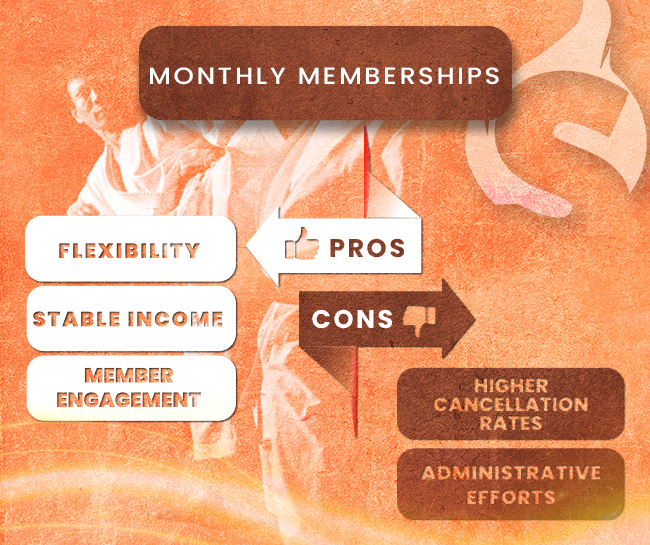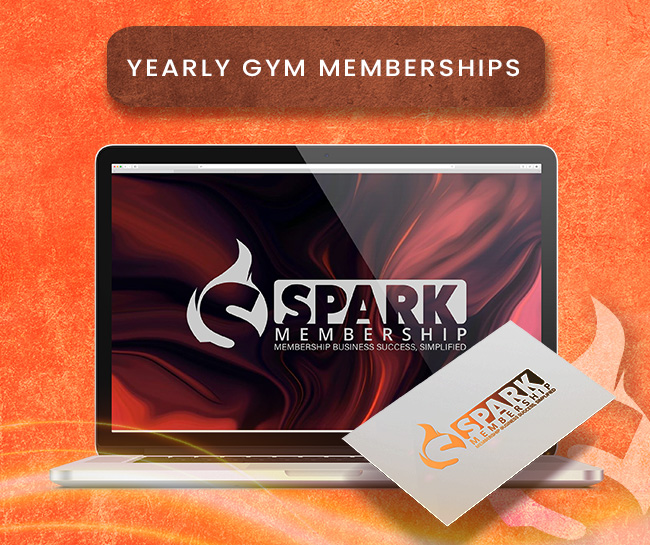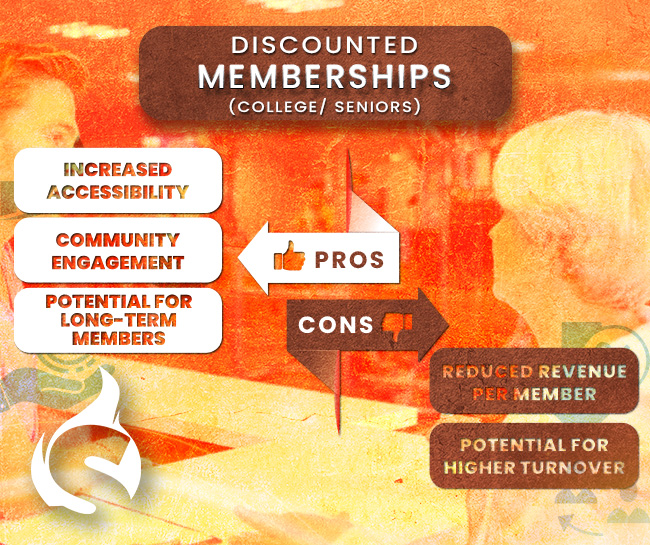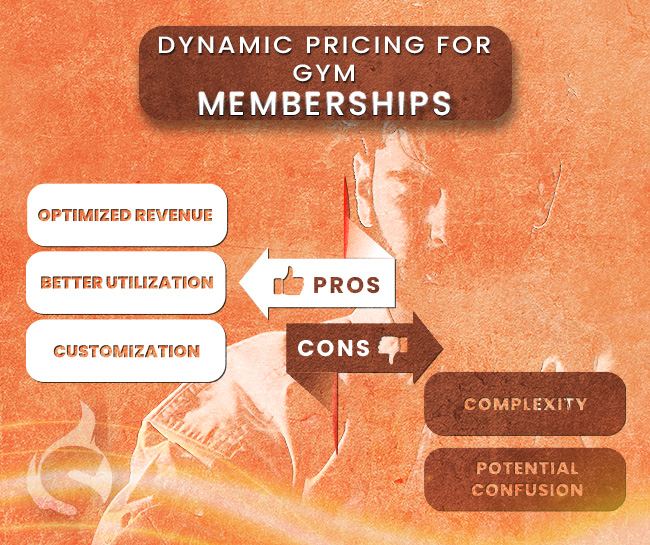
In today’s competitive fitness industry, understanding the different types of gym memberships is essential for keeping a diverse range of clients happy. This article breaks down various membership options to help gym owners meet their customers’ needs. By offering a variety of memberships, gyms can boost member satisfaction and support their business’s success.
Monthly Memberships

Ideal For: Frequent gym-goers who prefer flexibility, and gyms seeking a stable monthly income.
Monthly memberships are one of the most popular types of gym memberships among gym-goers. These plans typically involve a recurring fee charged every month, providing members with unlimited access to the gym and its facilities during this period. Monthly memberships often include additional perks such as group fitness classes, personal training sessions, or discounts on other services.
Pros:
- Flexibility: Members can join or cancel their membership at any time, making it a low-commitment option.
- Stable Income: Provides a consistent revenue stream for gyms.
- Member Engagement: Encourages regular visits and ongoing engagement with the gym.
Cons:
- Higher Cancellation Rates: Members may cancel their membership after a short period.
- Administrative Effort: Requires ongoing management of billing and cancellations.
💡 Monthly memberships can be good for both gym owners and members. They can help owners stay financially stable and keep members interested and loyal.
Yearly Gym Memberships

Ideal For: Committed members looking for cost savings, and gyms seeking long-term revenue stability.
Yearly memberships involve a one-time payment for an entire year of access to the gym. These plans often come with a significant discount compared to monthly memberships, incentivizing members to commit long-term. Yearly memberships can also include additional benefits like free guest passes or exclusive access to premium services.
Pay-as-You-Go Memberships

Ideal For: Occasional gym users and those seeking flexible commitment options.
Pay-as-you-go memberships allow members to pay only for the days they use the gym. This model is highly flexible, catering to those who cannot commit to a regular schedule. Typically, members purchase a set number of visits or pay a daily fee.
Pros:
- Maximum Flexibility: Members only pay when they use the facilities, making it an attractive option for occasional users.
- No Long-Term Commitment: Ideal for people with unpredictable schedules or those who travel frequently.
- Potential to Attract New Customers: Can serve as a trial option for new members.
Cons:
- Inconsistent Revenue: Income can be unpredictable for the gym.
- Lower Member Engagement: May not encourage regular visits or loyalty.
💡 Pay-as-you-go contracts can be a great way for gyms to make money, get new customers, and give customers more options for how they want to use their services.
Discounted Memberships (College/Senior)

Ideal For: Specific demographics like students and seniors, and gyms looking to engage with the community.
Discounted memberships cater to specific demographics, such as college students or senior citizens. These plans offer reduced rates to make gym access more affordable for these groups. Discounts can be a percentage off the regular price or a specially designed membership plan with limited features.
Pros:
- Increased Accessibility: Makes gym memberships affordable for students and seniors.
- Community Engagement: Helps build a supportive community environment.
- Potential for Long-Term Members: Young members may continue their membership post-graduation.
Cons:
- Reduced Revenue per Member: Discounts mean lower income compared to standard memberships.
- Potential for Higher Turnover: Students may cancel memberships during breaks or after graduation.
Dynamic Pricing for Gym Memberships

Ideal For: Price-sensitive customers and gyms looking to maximize occupancy during off-peak hours.
Dynamic pricing involves adjusting membership fees based on demand, time of day, or other factors. This model aims to maximize gym occupancy and revenue by offering lower prices during off-peak hours and higher rates during peak times.
Pros:
- Optimized Revenue: Can increase income by charging more during high-demand periods.
- Better Utilization: Encourages members to visit during less busy times, balancing gym traffic.
- Customization: Allows gyms to tailor prices to member preferences and behaviors.
Cons:
- Complexity: Requires careful management and monitoring of pricing changes.
- Potential Confusion: Members might find dynamic pricing confusing or unfair.
Diverse gym membership options are crucial for attracting and retaining a wide range of customers. By understanding the various types of gym memberships available—monthly, yearly, pay-as-you-go, discounted, dynamic pricing, and tiered plans—gym owners can make informed decisions to meet the needs of their clientele and enhance their business success. Evaluate your current membership offerings and consider diversifying to ensure you’re providing the best options for your members. This approach not only boosts member satisfaction but also strengthens your gym’s financial stability and growth.
Do you want to simplify the process of maintaining your gym memberships? Spark Membership Software is worth a try! You may manage payments and maintain member engagement with its assistance. Now is the time to upgrade your gym!